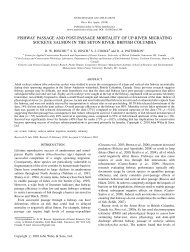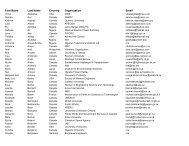Managing External Innovation: The Case of Platform Extensions
Managing External Innovation: The Case of Platform Extensions
Managing External Innovation: The Case of Platform Extensions
Create successful ePaper yourself
Turn your PDF publications into a flip-book with our unique Google optimized e-Paper software.
only modules added following the modules development but following modules<br />
deployment as they extend from the full knowledge <strong>of</strong> existing modules and add new<br />
capabilities to the platform. <strong>The</strong> quality <strong>of</strong> the developed modules is measured by<br />
performance and usability, both <strong>of</strong> which are two aspects <strong>of</strong> module composability<br />
(Messerschmitt and Szyperski, 2003). Extensible platform architecture empowers<br />
platforms because <strong>of</strong> the ongoing input from the community to complete and enhance the<br />
platform (Hemrajani, 2006b).<br />
<strong>Platform</strong> extensions may have different forms such as plug-ins, add-ons, and modules.<br />
<strong>Extensions</strong> can be classified as: external extensions, internal extensions, and extensions<br />
that become part the platform core. Figure 3 represents the platform architecture with<br />
different types <strong>of</strong> the platform extensions.<br />
Interface<br />
<strong>External</strong> (or<br />
optional) extension<br />
Internal (or<br />
essential) extension<br />
Infrastructure s<strong>of</strong>tware<br />
<strong>Extensions</strong><br />
became part<br />
<strong>of</strong> the<br />
platform core<br />
<strong>Platform</strong><br />
Figure 3. <strong>Platform</strong> architecture and types <strong>of</strong> extensions<br />
18<br />
Extension
















